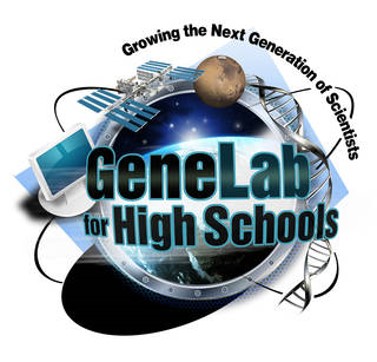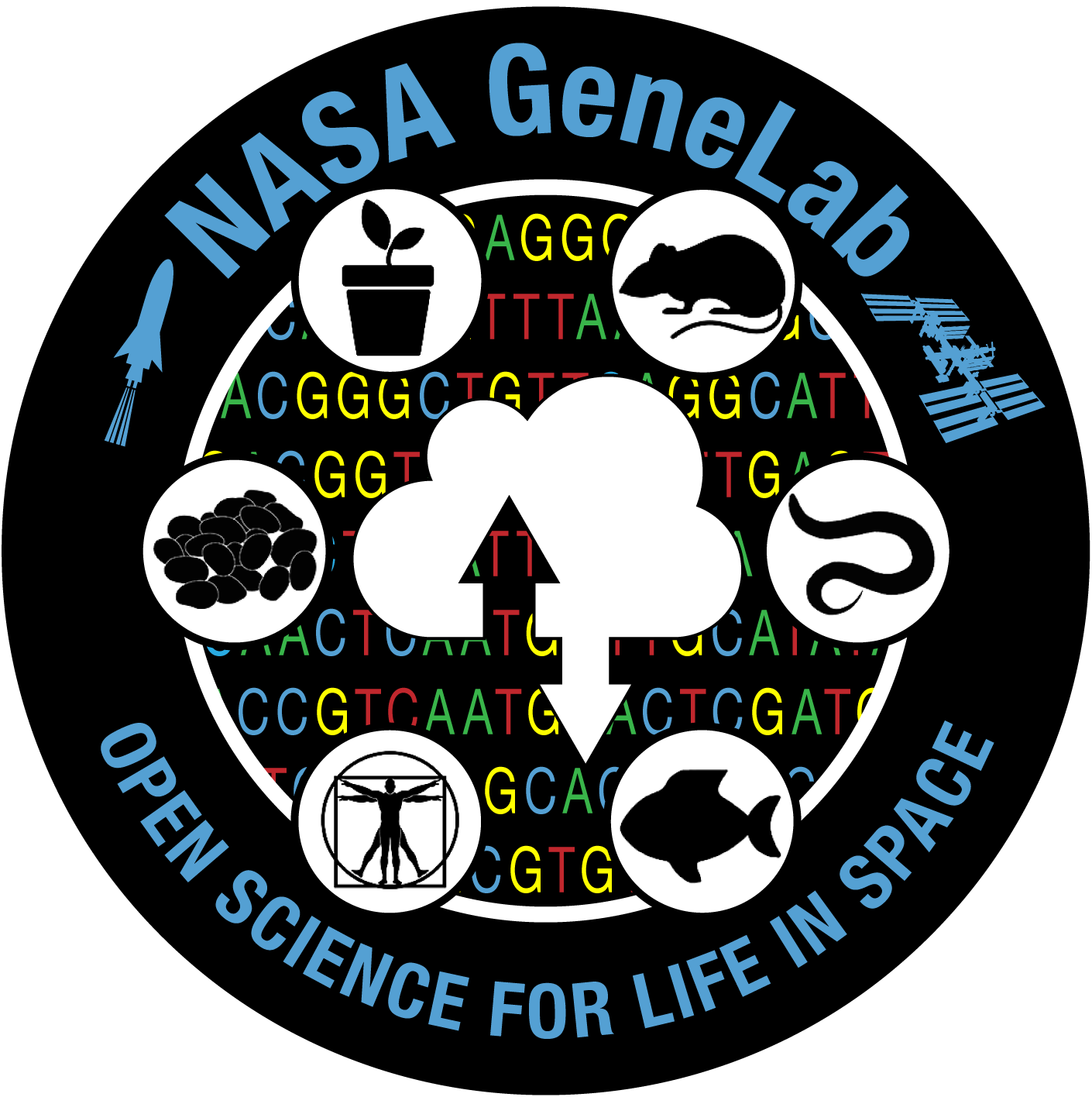
Overview: Teaching the Next Generation of Scientists
GeneLab for High Schools is a summer intensive internship for fifteen high school students selected from an applicant pool of rising juniors or seniors. The program provides an introduction to space biology and methods associated with bioinformatics analysis. Students run GeneLab’s standardized RNAseq pipeline using the GeneLab Analysis Platform (powered by Galaxy) to analyze a dataset, and the final product of the program is a team presentation on an -omics research proposal based on the teams’ findings. In tandem with the high school students, up to three high school teachers are also selected to participate concurrently in the summer internship program. Teacher participants use the knowledge that is gained from this program to customize a lesson or unit for their own classroom use. Since its inception in 2017, GeneLab for High Schools has reached over 50 high schools across the country.
Here is a quick guide for student analyses of the datasets that have been prepared for GL4HS: GL4HS Reference Guide to Analyzing a Dataset.
Curricular Units Developed by GL4HS Teacher Interns
The units published in this section represent a full sequence of lessons and supporting activities that are designed to last approximately 1-2 weeks. Curricular Units will include a statement of content objectives, suggested pacing, methods, and accommodations to scale the lesson up or down to different age groups and ability levels, in addition to both teacher guide and student version of materials.
Exploring Gene Expression with Bioinformatics Using GLDS-288, by Jennifer Bliss
Explore gene expression using GLDS-288, a mouse spleen dataset.
Space Farming: Space Biology, Plants, and Using the GeneLab Data Repository, by Erin Tubolino
Engage students with this entry-level lesson for learning the importance of plant studies in the context of space biology using the GeneLab Data Repository.
Effects of Spaceflight on Plants Using GLDS-38, by Monique Salazar, PhD
This week-long unit introduces students to the structure and function of the plant model organism, Arabidopsis thaliana, and the effects of the spaceflight factors on their development.
- Teacher Guide
- Student Worksheet: Model Organisms
- Student Worksheet: Plant Parts
- Student Worksheet: Metadata
- Student Worksheet: Volcano Plots
- Student Worksheet: MA Plots
Introduction to GeneLab, by Elisheva Bailey
This set of lessons introduces the GeneLab data repository and the methods used in omics analysis for teaching freshman biology.
The Importance of Space Biology, by Brie Logan
Introduce students to the breadth and depth of space biology topics using this lesson that was originally written for middle school students but can be adapted to other levels of teaching.
Worksheets Developed by GL4HS Teacher Interns
The worksheets in this section provide stand-alone lessons that use space biology or bioinformatics concepts that can be woven into a teacher’s existent curriculum across a variety of units and even subjects.
BioBites #1: Intro to Statistics, by Catherine Peterson
Introduction to basic statistics, including p-values and confidence intervals.
BioBites #2: Intro to Omics, by Catherine Peterson
Use this lesson to help students define omics and differentiate between branches of omics studies.
BioBites #3: Intro to PCA Plots, by Catherine Peterson
Learn how to read a principle component analysis (PCA) plot in the context of biological data.
BioBites #4: Intro to Bar and Line Graphs, by Scott Ryan
Strengthen skills in data interpretation by learning how to use bar graphs and line graphs.
BioBites #5: Intro to Experimental Design, by Scott Ryan
Familiarize students with the basics of experimental design to help prepare students for research.
Of Bobtails and Bacteria: Intro to Experimentation and the GeneLab Data Repository, by Jennifer Claudio
Introduce students to the GeneLab Data Repository which can be integrated into a unit of symbiosis or variables.
Introduction to Model Organisms, by Geizi Dejka
Explore the characteristics of model organisms and their importance to data acquisition.
Who Wants to be the Model Organism?, by Geizi Dejka
Using local and cultural context, consider which organisms could be used as model organisms in the Four Corners region of the United States.
Videos
The links to video walk throughs in this section are intended to support the teaching of space biology and relevant bioinformatics, spanning discussions of background concepts and how to use the GeneLab Galaxy Analysis Platform.
- Overview of GL4HS Teacher Internship
- Five Reasons to Incorporate Space Biology and Bioinformatics in High School Curriculum
- Intro to the RNAseq Workflow
- Getting to Know your Metadata: Preparation for Analyzing a Data Set
- GL4HS Bioinformatics Manual Run Through (Raw Data through Trimmed QC) using Galaxy platform
- GL4HS Bioinformatics Manual Run Through (Alignment Using RNA STAR)
- GL4HS Bioinformatics Manual (Counting Mapped Reads and QC)
- GL4HS Bioinformatics Manual Run Through (Counts Through DGE)
- GL4HS Bioinformatics Manual: Functional Analysis Part 1 (GOSeq)
- GL4HS Bioinformatics Manual Run Through Functional Analysis Part 2 (FGSEA)
- From Analysis to Research

